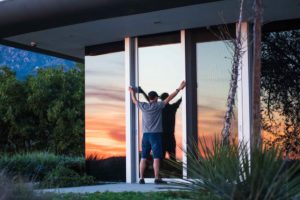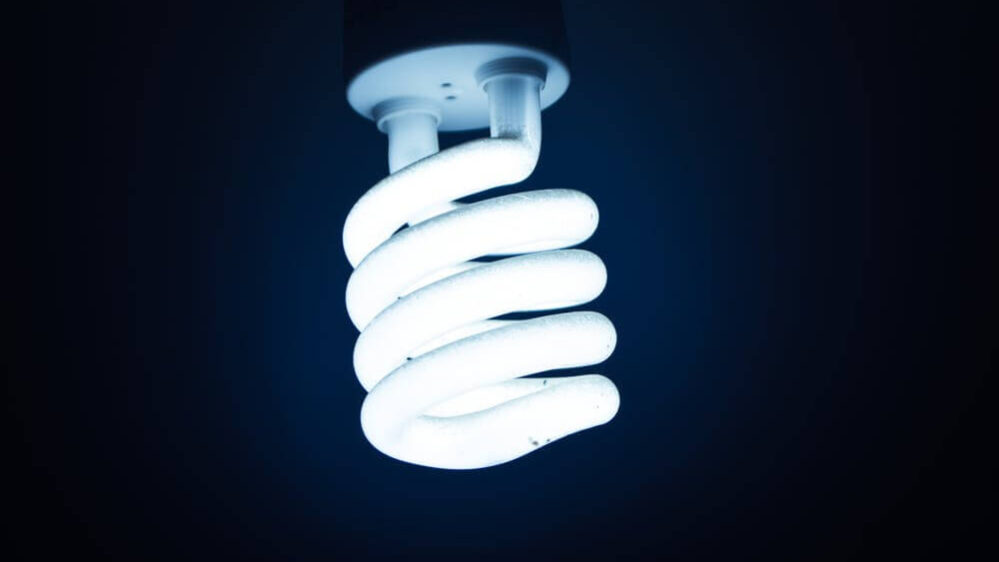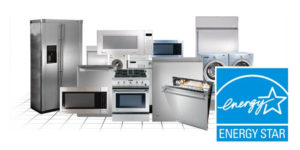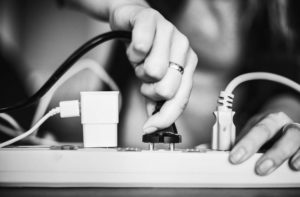It’s important to take a look at the efficiency of your home before going solar. Many people don’t fully understand their home’s energy usage. Unfortunately, this unawareness can lead to a large solar installation cost or even larger utility bills after going solar. When considering installing solar, not only should you find a reliable company that will assess your history and future needs, try doing some research to determine what changes need to be made in your own home. Some solutions may require a sizeable up-front investment, but if you can take control of your energy use before going solar, you will most certainly save money in the long run.
**For many appliances and home improvement items, look for the ENERGY STAR® logo which indicates that it meets strict criteria for energy efficiency.**
1. Upgrade and Maintain Energy Efficient Appliances
When shopping for new appliances look for the ENERGYGUIDE LABEL. It will show you:
-
- Maker, model number, and size of the appliance.
- Estimated yearly operating cost (based on the national average cost of electricity), and the range of operating costs for similar models.
- Estimated yearly electricity consumption in kilowatt-hours (kWh). The smaller the number, the less energy used.
- Key features of the appliance and the similar models that make up the cost comparison range.
Refrigerator
-
- Select a refrigerator that is the right size for your household. Top freezer models are typically more energy efficient than side-by-side models.
- Don’t keep your refrigerator or freezer too cold. Recommended refrigerator temperatures are typically 37-40 degrees Fahrenheit. Freezers should be 5 degrees while stand-alone freezers should be at 0 degrees.
- Vacuum refrigerator coils at least a couple times a year.
- Make sure your door seals are airtight. You can test them by closing the door over a piece of paper. If you can pull the paper out easily, the latch may need adjustment, the seal may need replacing, or you may consider buying a new unit.
- Cover liquids and wrap foods stored in the refrigerator. Uncovered foods release moisture and make the compressor work harder.
- Regularly defrost freezers and refrigerators; frost buildup decreases the energy efficiency of the unit.
Dishwasher
-
- Let your dishes air dry; if you don’t have an automatic air-dry switch, turn off after the final rinse and prop the door open slightly so the dishes will dry faster.
- Be sure your dishwasher is full (not overloaded) when you run it.
Washer/Dryer
-
- Wash your clothes in cold water using cold-water detergents whenever possible.
- Clean the lint screen in the dryer after every load. Occasionally vacuum below the lint screen to remove excess.
- Use the cool-down cycle to allow the clothes to finish drying with the heat remaining in the dryer.
- Periodically inspect your dryer vent to ensure it is not blocked. This will save energy and may prevent a fire.
- Use full loads, but not overloaded, you’ll save energy, water, and time!
- Consider air-drying clothes on clothes lines or drying racks.
Use Appliances Before or After Peak Hours
-
- Peak hours are typically from 4-9pm when energy rates are much higher. Check the SDG&E website and your bill to find out your specific tier rates and peak times.
- Use timers whenever possible and program during off-peak hours.
Smart Home Technology is a booming industry. Many manufacturers offer “smart” appliances that can be connected to a home management system. This will allow you to program your appliances to be used during off-peak hours. If you’re looking at lots of upgrades for your home and appliances, this may be a great investment to look into.
2. Proper Insulation, Sealing and Ventilation
Heating and cooling can account for almost half of your energy costs. Making sure your home is upgraded and sealed properly is extremely important in keeping your energy use contained.

Insulation
-
- Homes need the right insulation in order to maintain the desired temperature without overworking your HVAC.
- Have your HVAC and other equipment checked by a licensed professional to make sure things are running properly and to avoid costly repairs
- To check your insulation, remove an outlet cover for easy access to the wall insulation. From there, you can tear a small piece off to measure and determine the type of insulation. Check the U.S. Department of Energy’s online Insulation fact sheet to determine the R-values of insulation previously installed in your home.
Air Sealing
-
- Air leaks around your home are inevitable but can be limited by checking and sealing them appropriately. Look for:
- any openings or cracks where walls, ceiling, door, and window frames meet
- gaps around electrical outlets and recessed fixtures and cabinets
- gaps around attic access hatches and pull-down stairs
- behind bathtubs and shower stall units
- Air leaks around your home are inevitable but can be limited by checking and sealing them appropriately. Look for:
Prevent Moisture Issues
-
- Allowing unwanted moisture into your home is not only inefficient but expensive and possibly dangerous. You can avoid this by:
- making sure your roof is in good condition
- caulking around windows and doors
- keeping gutters clean and flowing away from your house.
- ventilate often and keep the vents clean
- ensure vents go directly outside, and not to your attic, where the moisture can cause problems.
- Allowing unwanted moisture into your home is not only inefficient but expensive and possibly dangerous. You can avoid this by:
Update or Replace Windows, Doors, and Skylights
-
- Heat gain and loss through windows and doors are responsible for approximately 25%–30% of heating and cooling energy use.
- Check existing windows and doors for air leaks. Caulk and weatherstrip if necessary.
- Add window treatments and coverings.
- Apply sun-control or other reflective films on south-facing windows to reduce solar heat gain. In hot climates, consider adding them to east, west, and south-facing windows.
- If replacing windows, look for a low solar heat gain coefficient (SHGC) and a low U-factor.
- Glass doors, especially sliding glass doors, lose much more heat than other types of doors because glass is a very poor insulator. Look for models with several layers of glass, low-emissivity coatings, and/or low-conductivity gases between the glass panes.
- A skylight can provide your home with daylight and ventilation, but are also an area for summertime solar heat gain and wintertime heat loss. Consider the shape, slope, and glaze of a skylight when installing for optimum energy efficiency.
3. Smart Outdoor Planning and Landscaping
Landscape and Foliage
-
- Use planned landscaping to increase your energy efficiency using these ideas:
- Plant trees and bushes to shade the walls and windows of your home.
- Be sure not to plant tall trees that shade your roof if you want or have solar on your roof.
- Smaller shrubs and groundcover plants can also shade the ground and pavement around the home. This reduces heat radiation and cools the air before it reaches your home’s walls and windows.
- Build a trellis for climbing vines to shade a patio area or outside wall.
- Install awnings on south- and west-facing windows to create more shade.
- Use planned landscaping to increase your energy efficiency using these ideas:
Pools
-
- Upgrade pumps to a variable speed pump and ensure that it is set correctly. Program its timing according to off-peak times.
- Significantly reduce heating costs by using a pool cover. There are many types that don’t require automatic systems or perfectly rectangle designs.
Lighting
-
- Install outdoor solar lights for decks, patios, gardens, and pathways.
- Set up motion sensors for lights that are not needed all night.
- Use timers for decorative or security lighting.
4. Adjust Your Habits
-
- Lighting can account for 10-15% of a typical residential utility bill. Turn off your lights and rely on natural sunlight as much as possible.
- Upgrade your light bulbs to LED.
- Unplug battery chargers when the batteries are fully charged or the chargers are not in use.
- Don’t leave your tablet or mobile phone plugged in overnight. It only takes a couple of hours to charge.
- Invest in a portable solar charger to charge phones, tablets, etc. Charge them on your car dashboard.
- Use sleep mode instead of a screen saver.
- Make sure your monitors, printers, and other accessories are on a power strip/surge protector. When this equipment is not in use, turn off the switch to prevent them from drawing power.
- Turn off and unplug all electronics when you go on vacation, DVD players, TVs, computer chargers, video game consoles, lamps, etc.
- Open your windows to get a breeze or use your ceiling and portable fans before resorting to the AC.
- Use blinds and curtains to block solar heat.
- Program your thermostat so you can avoid unnecessary heating or cooling when you’re away or forgot to turn it off.
- Use a microwave, slow cooker, air fryer, toaster oven, or convection oven for small meals. A smaller appliance uses one-third to one-half as much energy as a full-sized oven.
- Turn off the oven a few minutes before cooking time runs out. Your food will continue to cook without using the extra electricity.
- Refrigerators and freezers operate most efficiently when full because food density retains the “coldness” longer than air. However, don’t overload your fridge as this causes reduced airflow and requires more energy output.



